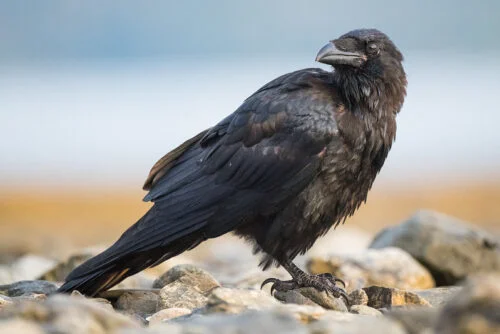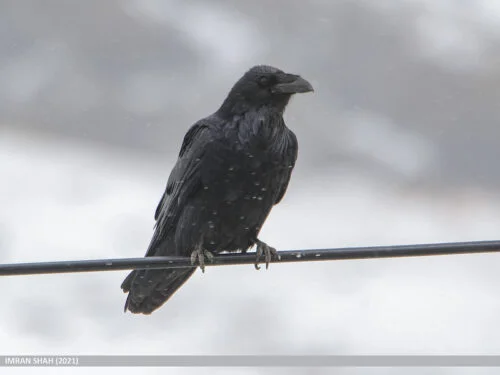Get ready to learn all about the largest songbird in the world, the common raven!
With its striking appearance, diverse diet, and fascinating behavior, this magnificent bird has captured the hearts of birdwatchers and nature enthusiasts alike. Discover where you can spot this avian marvel, uncover fun facts, and learn about its conservation status in this lighthearted yet informational journey into the world of the common raven.

When we think of songbirds, we often picture the delicate, melodious warblers or the vibrant and energetic robins. But have you ever wondered what the largest songbird in the world might be?
Well, wonder no more! Meet the common raven (Corvus corax), a member of the Corvidae family and the holder of the title for the largest songbird. These intelligent and adaptable birds have some seriously impressive traits, making them the perfect subject for our nature-loving exploration today.
Appearance and Sound
The common raven is a strikingly large bird, with a body length of 22 to 27 inches (56 to 69 centimeters) and a wingspan that can reach up to 53 inches (135 centimeters).
This magnificent bird is covered in glossy black feathers that can sometimes show an iridescent blue or purple sheen under the right lighting conditions. Ravens possess strong, thick beaks and dark, piercing eyes that give them a somewhat mysterious and enigmatic appearance.
When it comes to their vocalizations, ravens are truly gifted.
They can produce a wide range of sounds, including croaks, gurgles, knocks, and even mimicry of other birds or human speech. This exceptional vocal range allows them to communicate complex messages to one another and adds to their overall allure as songbirds.

Where can the Common Raven be seen?
The common raven’s adaptability has allowed it to thrive in a variety of habitats across the Northern Hemisphere. You can find these impressive birds in a wide range of environments, from dense forests and mountain ranges to coastal cliffs and Arctic tundras. In fact, ravens have even made their way into urban areas, demonstrating their ability to coexist with human populations.

Diet and Behavior
The common raven’s diet is nothing short of diverse. These birds are known to be omnivorous opportunists, feasting on a wide range of food sources, from insects and small mammals to fruits, seeds, and carrion.
Ravens have even been observed using their intelligence to access hard-to-reach food, such as breaking open nuts by dropping them from a height or prying open containers with their powerful beaks.
Ravens are also known for their complex social behaviors.
They form strong pair bonds and engage in elaborate courtship rituals that involve aerial displays, vocalizations, and mutual preening. Additionally, ravens are incredibly curious and have been observed using tools, solving problems, and even playing games with each other.
Fun Fact
Here’s a fun tidbit for all you raven enthusiasts out there! The common raven has been the subject of numerous myths, legends, and cultural references throughout human history. In Norse mythology, the god Odin is often depicted with two ravens, Huginn and Muninn, symbolizing thought and memory. Ravens also feature prominently in the works of Edgar Allan Poe, most notably in his famous poem, “The Raven.”
Conservation Status
Thankfully, the common raven is classified as “Least Concern” by the International Union for Conservation of Nature (IUCN). This is due to the bird’s widespread distribution, large population, and adaptability to various environments. However, it’s still essential to protect the natural habitats of these fascinating birds and be aware of the potential impact of human activities on their populations. As with all wildlife, promoting sustainable practices and responsible interactions with these incredible creatures is crucial in ensuring their continued survival and well-being.
Conclusion
The common raven, with its captivating appearance, incredible intelligence, and wide vocal range, truly earns its title as the largest songbird in the world. Whether you’re a seasoned birdwatcher or a casual nature lover, the sight and sound of these remarkable birds is always a delight.
So, the next time you venture into the great outdoors or even stroll through an urban park, keep an eye (and an ear) out for the common raven, and let their melodious calls remind you of the beautiful complexity of the natural world. Happy birdwatching!
